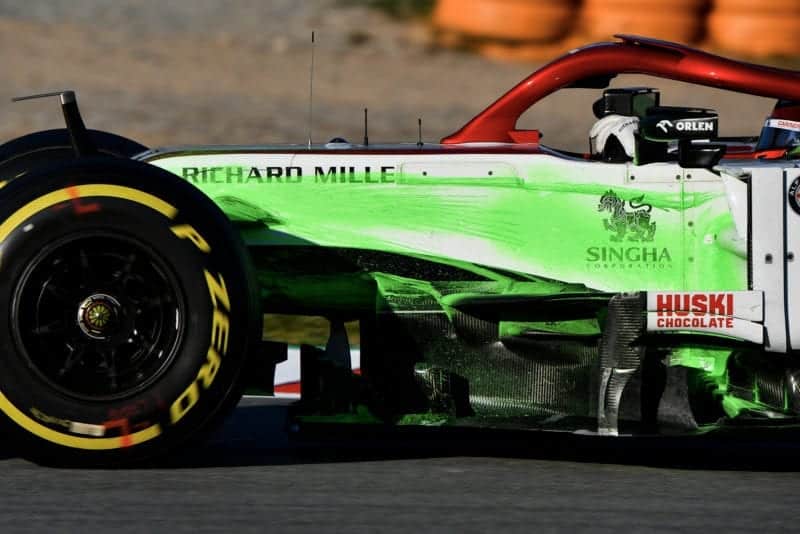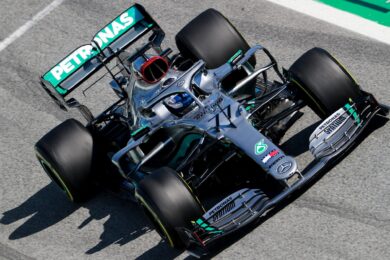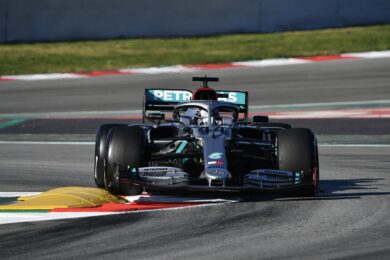He explains that the journey the air hitting the barge boards and sidepods takes, starting at the point where it meets the front wing, is deeply influenced by the many complex elements around the front wing, nose and brake ducts, which are there to organise and control this airflow as it heads down the car’s length.
The 2019 rule changes around the front wing made this air management task harder for teams. Previously, wings could be adorned with a plethora of winglets and other devices to steer flow around the wheels and outboard, helping drive the chaotic air coming off the wheels away from the downforce generating parts in the centre of the car. As Agathangelou phrases it, they gave “authority” over the flow structures.
With the new rules, teams had to find fresh means of achieving the same aims, steering the air where they wanted it. If they couldn’t, downforce would be drastically reduced. Agathangelou notes that the profile of each individual section of the wings assumed greater importance, and their shape has become ever more complicated. Aerodynamicists use variations in the thickness, angle and surface shape of each wing section to manipulate the air, Agathangelou calling these “macro surface details.”
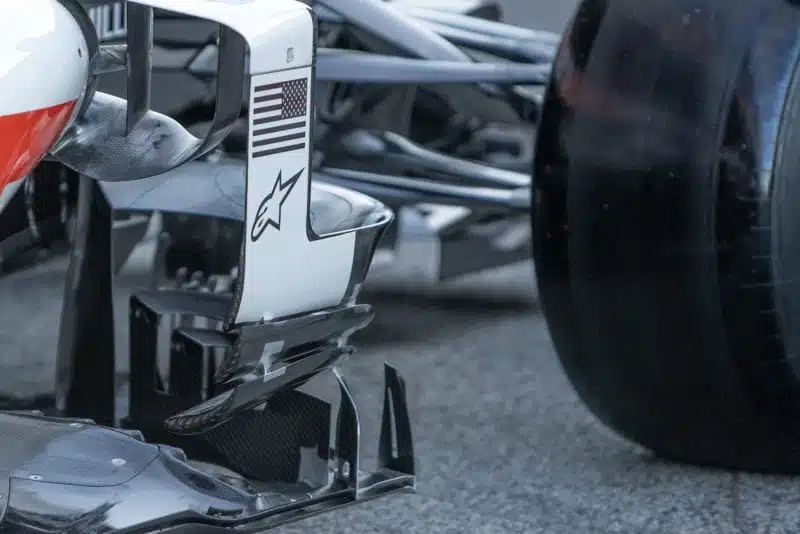
All of those vanes and flaps have a role to play in tuning the airflow
Haas, he says, now has the same level of wheel wake control as it did before the ‘19 rule changes, but this has come at considerable expense for teams. “Previously, you could just apply additional bits. That actually cost less [than what we are doing now] because you were developing stuff that was cheap to stick on, both in the wind tunnel and on car. Now, you have to change a whole wing. So you’re making £10-15,000 pounds wing assemblies of five elements every time in the wind tunnel, or when you get to the car, spending hundreds of thousands on updating wing profiles.”
He also pointed out that whereas previously, a team like Haas would update its wing in some subtle way every couple of races, keeping the same underlying parts, updates now took around eight races to deploy thanks to the long lead time on building an all new wing.
Vortex control
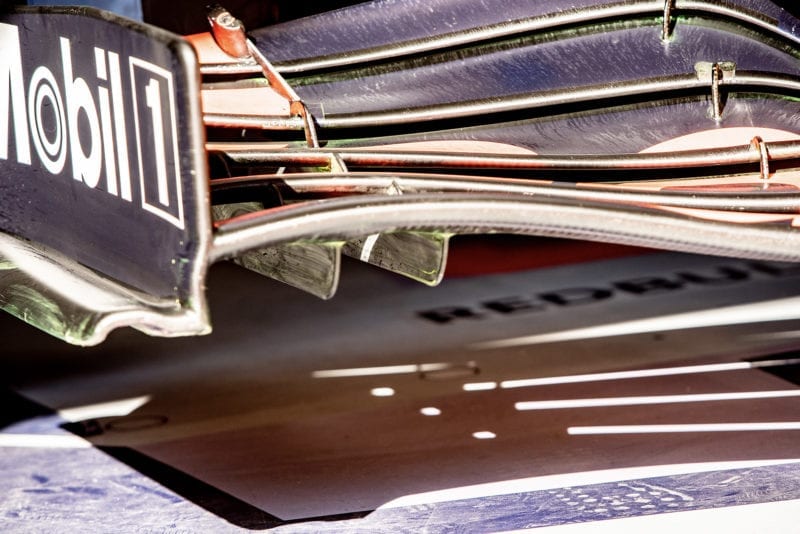
Red Bull front wing with flow viz showing some of the elements used to push the wake outboard and the complexity of the wing geometry
It is the air moving off the central section of the wing that is of greatest direct importance to the performance of aero features further down the car. The well-known Y250 vortices – the spinning tubes of air, so named due to the fact they are generated by the abrupt ending of the wing elements where they run up against the regulation-imposed spec central element, 250mm either side of the car’s centreline – are caressed and managed by the various capes, winglets and other adornments under the nose, until they reach the bargeboards.
Bargeboards are not a new idea, they have been in F1 since the early 90s, but in 2017, the rules freed up development in this area, allowing large and more complex designs. “I don’t think the fundamentals have changed in the objectives and principles of bargeboards. They have always been about pushing the pressure field [generated around the centre of the car] out in order to avoid the ingestion of the wheel wake,” explains Agathangelou.

Williams employing a lot of flow-viz to better understand its bargeboards and floor
The difference now compared to the ’90s, he says, are the Y250 vortices, which only arrived with the rules stipulating the spec centre wing section in 2009. “Those vortices have to be conditioned, accommodated and the managed by [what is] behind them. So if you combine those two core demands [pushing the wheel wakes out and managing the Y250], then everything [around the bargeboards] is purposed by those two prime motives.”
Put simply, the job of the bargeboards is to organise the vortices coming off the front wing’s centre, while also ensuring that the messy wake from the front wheels is not sucked into the floor. As the oncoming air, which is not one single big vortex, but many smaller ones, hits each of those tens of flicks and vanes, its speed and direction of travel will be adjusted. And if you think that’s complicated, consider that this function must also be fulfilled while the car is turning, and air is not hitting it square on.
Pod racers

Ferrari sidepod showing example of high inlet, with radiator also visible
Also in this mix are the sidepods and inlets for a car’s radiators. This year every team, with the exception of Racing Point, has adopted what has become known as a high inlet sidepod, where the inlets either side of the car sit above the mandatory side impact structures.
The move to high inlets, says Agathangelou, is simply a matter of trying to separate the flow going to the radiators from that destined for the floor by moving them further apart. The side impact structure is the limiting factor here, it must be mounted within a given area and it is logical to put the inlet either above or below it, rather than behind it!
